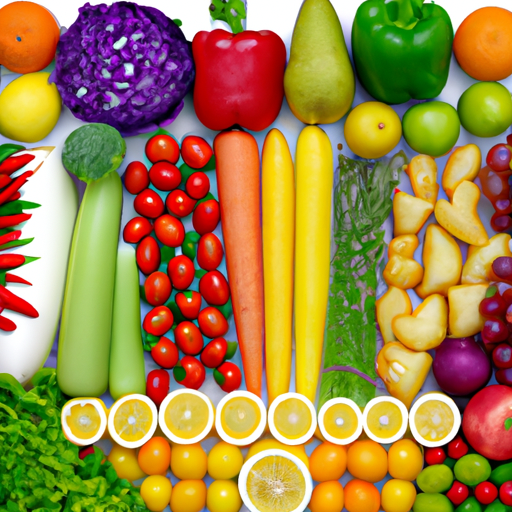Introduction to the Farm-to-Table Movement
When it comes to food, you often hear about the “farm-to-table” movement. Well, let me tell ya, it’s pretty darn nifty. The idea is simple: get your grub from local farmers who use sustainable farming practices, not big agri-corps who are all about factory farming and cuttin’ corners.
Basically, farm-to-table means that the food that you eat didn’t have to travel a million miles, or go through multiple middlemen, to get to you. Rather, it was grown right in your own backyard, and you know exactly where it came from. This is huge; you can support small farms and businesses, reduce your carbon footprint, and eat healthier, fresher food.
The Benefits of Eating Farm-to-Table
If you’re looking to up your health and environmental game, then farm-to-table eating is a great place to start. Yeah, it’s a little bit more expensive than buying processed food at the grocery store, but trust me: you’ll be doing your body — and Mother Nature — a huge favor in the long run.
First off, let’s talk about the health benefits. Sure, you might think that what you eat doesn’t really matter, but the truth is, it can make all the difference. When you buy from local farms, you know exactly what kind of ingredients are going into your meals. No mystery preservatives or chemically enhanced flavorings here. What you get is pure, unprocessed goodness straight from the source. Plus, since most local farms specialize in organic produce, you’re avoiding all those nasty pesticides, too.
Now, let’s move on to the environmental benefits. These days, so much of our food is shipped in from other countries. That means extra fossil fuels burned and tons of pollution pumped into the air. But when you buy food from local sources, there’s nothing like that. Your food travels short distances by car, reducing emissions and conserving energy — not to mention supporting your local economy. Win-win!
Conclusion
Well, that was sure a mouthful. Let’s recap the farm-to-table movement without going into too much detail: it’s a trend in eating where we get our food from local farms as opposed to factories or large-scale producers.
The benefits of this type of eating are clear: not only is it healthier for us and better for the environment, but it also supports local farmers and provides us with fresher, tastier food.
Getting started on your farm-to-table journey isn’t too difficult; there are plenty of sources for farm-to-table food, and lots of tips for purchasing and preparing it. Don’t let yourself get overwhelmed – just take it one step at a time and you’ll be reaping the benefits in no time!
So, to sum it up – eat farm-to-table! It can be great for your health, the environment, and your taste buds. It ain’t gonna be easy, but it sure is worth it.
Farm-to-Table FAQ
What is the farm to fork food trend?
I’m gonna break it down for you: The farm-to-table movement is all about cutting out the middleman, ensuring that fresh food you buy is straight from the farm that produced it. It’s all about promoting local, sustainable farming practices, and honoring the environment at the same time. It’s about going against the grain of mass-produced food, and creating a healthier, more sustainable food system.
If you want to take part in the farm-to-table movement, your first step is to find out where your food comes from. Most places make it easy to find out, whether it’s through farm-to-table restaurants or through websites and local farmers markets. Ask questions, do your research and make sure that you’re getting the freshest, most sustainable food available.
You should also consider what kind of food you’re buying. Are you buying organic? Is the produce locally grown? Are the poultry and livestock sustainably raised? These are all questions that you should ask to make sure you’re doing your part to support this movement.
Finally, it’s important to stay informed about what’s going on in your local food system. Participate in farm tours, sign up for farm-to-table supper clubs, volunteer with local farms, and join food policy-focused organizations. All of these things can help you learn more about where your food comes from and how you can help make sure that it’s sustainable.
the rise of the farm-to-table movement: what you need to know
When it comes to the farm-to-table movement, there’s a lot to know. For starters, the concept is all about sustainability and ensuring the food we eat is fresh and healthy. It means that, rather than relying on processed foods from the store, we can go straight to the source and get our food from local farmers and producers.
This is a great way to support your local community, since you’re buying directly from the people who make the food available. Plus, you get to enjoy the freshest and healthiest produce, since it hasn’t been tampered with or transported long distances.
Another benefit of the farm-to-table movement is that you’ll be better informed about the sources of your food. That means, when you purchase farm-fresh produce or proteins, you’ll know exactly where they’re coming from and how they’re grown.
Of course, that means you’ll also need to do your research to make sure you’re getting the best quality products and supporting responsible farmers. Look for certifications like organic, biodynamic, and sustainable, and ask questions about the farming practices used.
Finally, the farm-to-table movement is about making ethical decisions for the environment. When you purchase food from local farmers, you’re reducing the strain on the environment from long-distance shipping. Plus, you’re cutting down on unnecessary packaging, since you’re buying directly from the source.
In short, the farm-to-table movement is about being conscious of the foods we eat, where they’re coming from, and how they’re produced. The more informed you are, the better decisions you’ll be able to make for your health, the environment, and your local community.


